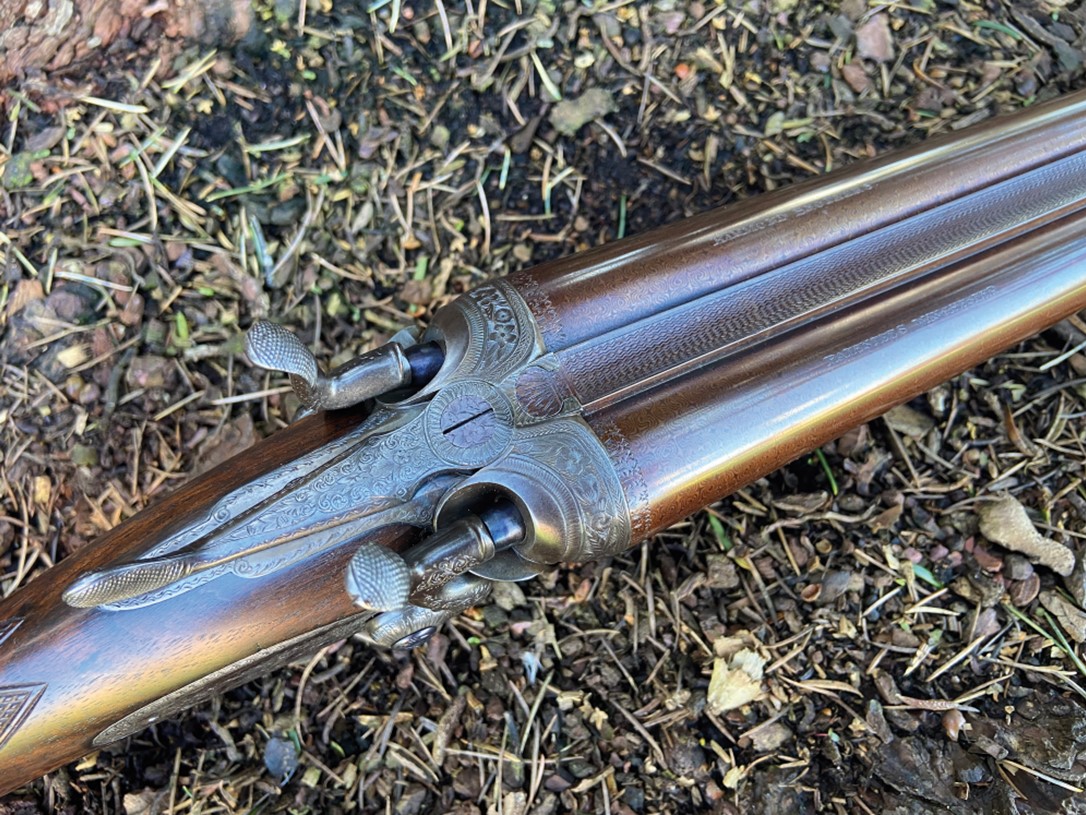Digory Hadoke delves into the history of Winchester’s Hammond Bros, as he uncovers the story behind a meticulously preserved 19th century shotgun
The city of Winchester is not universally revered as a centre of gun-making excellence. However, over the two decades or more that I have been trading in, and writing about, British guns, the wares of one maker from the city have repeatedly come to my attention. Usually they are worn-out, rusty or repaired, but on this occasion I came upon a very good, impressively original, nicely serviced example.
The maker in question is Hammond Bros and the gun is a 12-bore hammer shotgun with lock-plates of a shape that appears unique to this maker. The earliest Hammond I can find a trace of in Winchester is Isaac Hammond of 26, High Street, who established a business there in 1829, moved twice within the town, and finally traded from premises in Jewry Street until 1867.
In 1870 Henry & Edwin Hammond, presumably Isaac’s sons, continued trading under their own names. In 1878 they renamed the business as Hammond Bros and remained there as a business until 1970, although the company had been bought by Patstone & Cox in 1931, ending family involvement.
Unfortunately none of the pre-1930 Hammond Bros records have survived. What we have on the gun is the following. The barrel tubes are engraved ‘Hammond Brothers. Patentees, Winchester’. The locks are engraved ‘Hammond Bros’. The underside of the bar is also engraved ‘Hammond Bros, Patentees, Winchester.’
 There’s something innately cool and classic about a hammer gun and this is a prime example
There’s something innately cool and classic about a hammer gun and this is a prime example
The quality of the engraving is exceptional for a gun at this price point
The serial number 2436 is engraved on the bar flats and barrels, as well as on the guard strap. The original proof marks show 12 bore and 14 muzzle stamps, a way of denoting the choke used, and the additional ‘Not for Ball’ stamp that was also used from 1875 to 1887 to identify barrels that were made with what later became known as choke. The word ‘choke’ was not used as a proof stamp until 1887.
We can therefore deduce that the gun was made between 1875 and 1887, a window of just twelve years, by proof mark. The fact that Hammond Bros was only adopted as the company style in 1878 reduces that period by a further three years.
The action has a doll’s head, but unlike the original Westley Richards type it has no bolt to provide a third grip. It just slots into its recess, jointed on the circle, to provide an additional draw and some lateral stability. The work of holding the barrels to the face of the action falls to a conventional Purdey double under-bolt, operated by a top lever.
The distinctive ovoid lock plates house back-action locks of the rebounding type. The gun is of very high quality, with first- class workmanship evident throughout. This is no provincial hardware store gun made by the Midland Gun Company for the trade. It is an individual and distinctive gun that was made with care and pride.
 The lovely craftsmanship of the barrel and action is matched by the quality of the stock
The lovely craftsmanship of the barrel and action is matched by the quality of the stock
The filed and polished percussion-type fences are beautifully done and the full- coverage engraving of scrolls and flowers, with a styled ‘H BROS’ integrated into the bar is particularly well executed.
With the engraving on the barrels indicating that Hammond Bros were patentees, I conducted a search of the available data to see if a patent under that name could be found listed before 1887. There are indeed three patents attributed to Henry and Edwin Hammond. They are No. 2866 of 1878, for a thumb-slide safety for Anson & Deeley actions, and No. 4541 of 1882, which is a trigger bolt for Anson & Deeley guns.
Further back there is also a patent for a double-bite snap-action gun taken out in 1869 (No. 2904) with the co-patentees being Edwin Russ, Henry Hammond and Edwin Hammond. The gun illustrated is self-half- cocking, not at all like the one we have here.
Isaac Hammond’s earliest patent was in 1859 for a complicated gun and cartridge combination that represented an early attempt to address the merits of breech- loading and the limitations of pinfire.
So the gun we are looking at does not appear to conform to any actual patents taken out by a Hammond. It may well be the case that the ‘Patentees’ engraving on the barrels merely announces the fact that the brothers had lodged patents, even though none were demonstrable in the workings of this particular gun.
If this is the case, it is certainly not a practice we can attribute solely to Hammond Bros, as numerous other gunmakers did similar (shady) things that blurred the lines between the company, the gun and the patents it featured.
Weighing 6lb 15oz with 30" barrels, this is a typical-weight game gun of the last quarter of the 19th century. It was originally proof tested for black powder and has since been nitro-proof tested in London for 65mm cartridges under the metric rules, post 2005.
It has been sympathetically restored and is in excellent condition, retaining a very high degree of original finish on the action and locks. The barrels have been nicely rebrowned and the woodwork refinished and chequered.
A hammer gun of this quality and condition with a famous London name on the locks would be very expensive.
This Hammond Bros 12-bore represents something different and is excellent value. It is certainly the best of the five or six I have seen over the years by some margin.